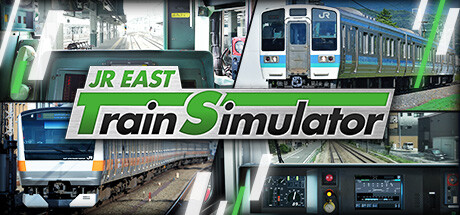We hope everyone is enjoying the Koumi Line DLC and updates that were released on Tuesday, January 30.
We have received the following comments about the Koumi DLC.
"It is a technical alignment, but the second half of the line has the flavor of a lifestyle line with short stops between stations, and I am excited to enjoy it more than I thought I would."
"This line has good topography and scenery, and is very interesting."
"I enjoyed the behavior of the Koumi Line and its first hybrid diesel train!"
We are encouraged by all of these positive comments and your candid reviews.
Thank you again for the many reviews and supportive comments.
[previewyoutube=qGakFQgsF6Y;full][/previewyoutube]
Now, I hope you all got the hint about the next distribution route that I gave in the last YouTube live-stream.(1:12:23~)
Let's check the answers to what route were represented by the number of 141!
・
・
・
The meaning of "141" was "the number of years elapsed since the date of opening," referring to the route's 141st anniversary this year.
You all know what I'm talking about when I say that this year marks the 141st anniversary of the line's opening, don't you?
[h4]So, the next DLC will be "Takasaki Line"![/h4]
The Takasaki Line is a 101.4 km long line connecting Omiya Station in Saitama City, Saitama Prefecture to Takasaki Station in Takasaki City, Gunma Prefecture.
The line has a relatively long history among Japanese railroads, with its predecessor, Nippon Railway Company, starting operations between Ueno Station and Kumagaya Station in 1883. The following year, in 1884, the line was extended to Takasaki Station and opened to full service. It was not until later, in 1909, that the line was officially named the "Takasaki Line".
Until the opening of the Joetsu Shinkansen in 1982, the Takasaki Line was the main transportation link between the Tokyo metropolitan area and the Niigata and Hokuriku regions, with many limited express and sleeper trains operating on the line. Currently, most of the long-distance transportation role has been handed over to the parallel Joetsu Shinkansen, and as of 2024, only "Akagi Limited Express" and "Kusatsu-Shima Limited Express" trains regularly operate on the Takasaki Line as limited express trains.
The Takasaki Line has been used as a key interregional transportation line for commuting to work and school, etc. In 2001, the Shonan-Shinjuku Line started service directly to the Tokaido Line via Ikebukuro and Shinjuku Stations, and in 2015, the Ueno-Tokyo Line started service directly to the Tokaido Line via Tokyo and Shinagawa Stations, allowing passengers to travel between the northern Kanto region and Kanagawa Prefecture without changing trains. The new line allows passengers to travel between northern Kanto and Kanagawa Prefecture without having to change trains.
On the way from Ueno Station to Omiya Station, the line runs parallel to the Keihin-Tohoku Line and the Shonan-Shinjuku Line, and continues through the Tokyo bedroom community. After leaving Omiya Station, fields along the line become conspicuous near Konosu Station, and near Fukaya Station, you can see the fields of "Fukaya Negi" green onions, which are famous throughout Japan. We hope you will enjoy this DLC as you ride along the Takasaki Line at speeds of up to 110 km/h while gazing at the ever-changing scenery.
We are working hard on the production so that we can inform you of the production status as soon as possible. Please look forward to further updates!

